
Did you know that one of the oldest animals in the world was discovered in South Africa over two decades ago? Scientists named the skeleton, which was distinctly ape-like, “Little Foot.” So aap (“ape”) would be an appropriate first word on our list of animals in Afrikaans!
Little Foot is touted to be the evolutionary predecessor of humans. It was found by accident in 1998 among fossilized bones already obtained from a well-known excavation site called the “Cradle of Humankind” near Johannesburg. The skeleton is thought to be over three million years old.
Whether you believe this ape is our ancestor or not, animals have been part of our lives since time immemorial. So naturally, any language study would include these nouns, which is why I have compiled this comprehensive list of over 250 animal names in Afrikaans for you. To further expand your vocabulary, also make sure to take a look at our list of the most common Afrikaans nouns.

Blouape kom baie algemeen in Suid Afrika voor. / “African vervet monkeys are very common in South Africa.”
 Table of Contents
Table of Contents
- Domestic Animals
- Wild Animals
- Animal Body Parts
- Common Afrikaans Animal Expressions, Idioms, and Sayings
- Why not learn about animals in Afrikaans with AfrikaansPod101?!
1. Domestic Animals
1.1 Pets vs. Domestic Animals
There’s a distinction to be made between “pets” and “domesticated animals.” Pets are usually kept at a person’s home for the purpose of companionship, protection, and/or special assistance. On the other hand, domesticated animals are also kept by people, but usually not in their homes and not for company. Think farms and livestock. On farms, you’ll find livestock such as sheep, chickens, and cattle; there may also be animals classified as “wild” by law, which are still kept by humans.
In this article, there are places where certain domestic animals and wild animals will overlap because all animals were once wild. Over time, the wild dog became the lapdog and wild cats were tamed to the point where they could no longer survive in the wild.
Some wild animals are tamed and kept as pets, but this is not common and not really advisable unless you’re a wildlife expert. Cats and dogs have been domesticated for thousands of years now. Yet most owners will testify that their kitties can still administer a mean scratch, and that their dogs can still give a nasty nip in a moment of excitement or fear. These wild impulses will never completely leave our pets.
Therefore, most wild animal pets (or domesticated wild animals) should be considered dangerous to a degree—even if they were born in captivity or were rescued at a young age. If they pose a risk to humans in the wild, chances are they will eventually pose the same risk in captivity. That’s just their nature.
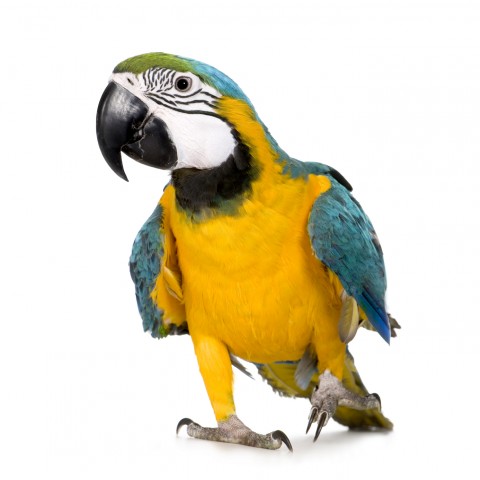
Aras maak goeie troeteldiere. / “Macaws make good pets.”
1.2 Pets in Afrikaans
Pets have been and still are our companions, and greatly beloved ones at that. Let’s start with the most common Afrikaans animal words for those who live at home with us.
Note: In Afrikaans, we do have specific names for the offspring of many animals and we do distinguish their gender. However, we most often refer to them in the following terms.
- mannetjie / literally: “little male”
- wyfie / literally: “little female”
- kleintjies / literally: “little ones”
| Afrikaans | English |
| 1. ara | macaw |
| 2. budgie | budgerigar |
| 3. kokketiel | cockatiel |
| 4. duif | pigeon / dove |
| 5. vink | finch |
| 6. kanarie | canary |
| 7. pou | peacock |
| 8. papegaai | parrot |
| 9. parkiet | parakeet |
| 10. kaketoe | cockatoo |
Example Sentences:
| |
Fun Fact! Did you know that in South Africa, 89% of house pets are dogs, followed by cats, birds, and fish? This is perhaps because interaction with dogs has been shown to reduce anxiety and depression in their owners. Studies have also shown that dogs have increased levels of feel-good hormones (dopamine, serotonin, and oxytocin) in their brains after interacting with their humans!
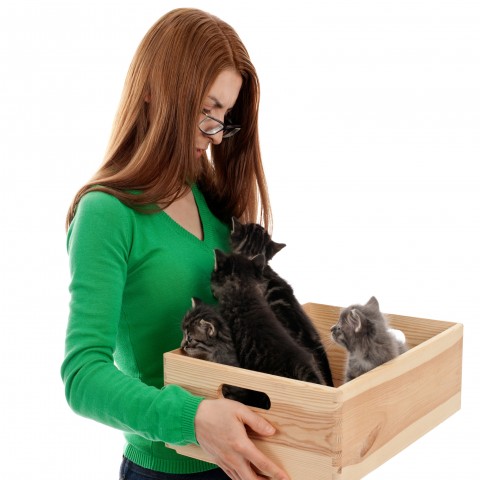
Ek is lief vir al my troeteldiere maar my katte is die naaste aan my hart. / “I love all my pets, but my cats are the closest to my heart.”
| 11. kat | cat |
| 12. Siamese kat | Siamese cat |
| 13. huiskat | house cat |
| 14. hond | dog |
| 15. bulhond | bulldog |
| 16. boerboel | boer bull |
| 17. mopshond | pug |
| 18. poedel | poodle |
| 19. teef | female dog / bitch |
| 20. reun | male dog |
| 21. hamster | hamster |
| 22. rot | rat |
| 23. muis | mouse |
| 24. marmot | guinea pig |
| 25. haas & konyn | hare & rabbit |
Example Sentences:
| |
Fun Fact! Did you know that photos of odd-looking or very photogenic pets can earn insane amounts of money? Thank social media for this, because at the time of writing, a million hits on Instagram could earn up to ZAR 250 000 (approximately $16,500) per animal post, which is double what a human influencer could make. This is according to Bronwyn Williams, a marketing specialist from Flux Trends.
During a photoshoot, always take care to act humanely towards your furry subjects and keep only their best interests at heart.
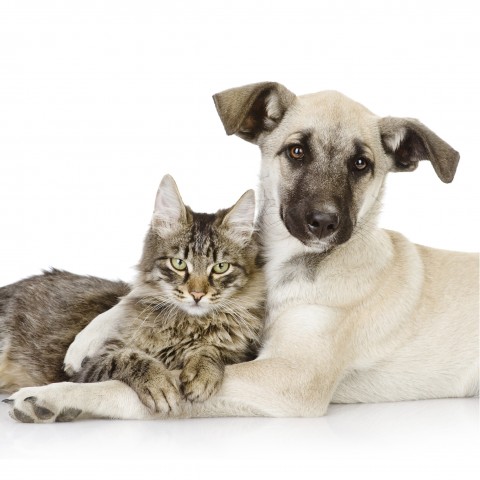
Sommige troeteldiere is baie fotogenies. / “Some pets are very photogenic.”
| 26. goudvis | goldfish |
| 27. koi vis | koi fish |
| 28. slang | snake |
| 29. skilpad | tortoise |
| 30. sywurms | silkworms |
Example Sentences:
| |
Fun Fact! Did you know that cat lovers are known as ailurophiles and dog lovers are cynophiles? According to one online study conducted by the research company GfK in 2014, Russia, France, and the U.S.A. are the countries with the most ailurophiles; Argentina, Mexico, and Brazil have the most cynophiles.
More people keep dogs as pets than cats, but women are more likely than men to own either or both. The study also indicated that more men keep fish than women.
In China, fish are the most popular pets, while Turkish people prefer birds. Respondents from South Korea, Hong Kong, and Japan recorded the highest number of non-pet owners.
In Europe, the British, French, and Swiss are the biggest spenders on their pets. But globally, Americans spend the most on theirs—a staggering $50 billion annually. This is unsurprising, as nine in 10 Americans are reported to see their pets as family members!
1.3 Farm Animals in Afrikaans
Farming is in Afrikaners’ blood. Most of our ancestors made their living keeping livestock, and the white Afrikaans-speaking South African population are colloquially referred to as the Boere (“Farmers”). Below, we’ll show you the names of farm animals in Afrikaans and bring a few key facts to light.
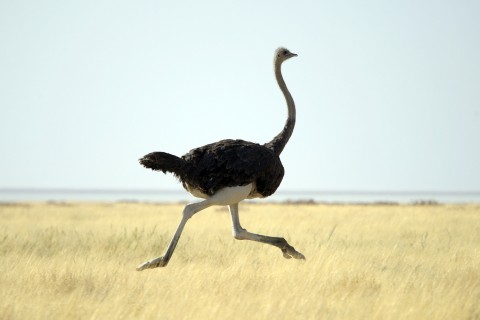
Volstruise kan baie verbasend vinnig hardloop. / “Ostriches can run remarkably fast.”
1.3.a Livestock / Domestic Farm Animals
As mentioned before, farm animals are not as tame as pets living in a house with people, but they’re still considered domesticated because people take care of them. We farm animals commercially for their meat and other products like eggs, milk, feathers, wool, hides, etc. Here is a list of the most popular farm animals in Afrikaans.
| Afrikaans | English |
| 31. hoender | chicken |
| 32. eend | duck |
| 33. gans | goose |
| 34. kalkoen | turkey |
| 35. tarentaal | guinea fowl |
| 36. beeste / bees | cattle / cow / bull / ox |
| 37. koei | cow |
| 38. bul | bull |
| 39. kalf | calf |
| 40. skaap | sheep |
| 41. ooi | ewe |
| 42. ram | ram |
| 43. lam / lammetjie | lamb / little lamb |
| 44. vark | pig |
| 45. varksog | sow |
| 46. beer | boar |
| 47. varkie | piglet |
| 48. bok | goat |
| 49. donkie / esel | donkey |
| 50. muil | mule |
| 51. perd | horse |
| 52. merrie | mare |
| 53. hings | stallion |
| 54. vulletjie | filly |
| 55. ponie | pony |
| 56. alpakka | alpaca |
| 57. kameel | camel |
| 58. lama | llama |
Example Sentences:
| |
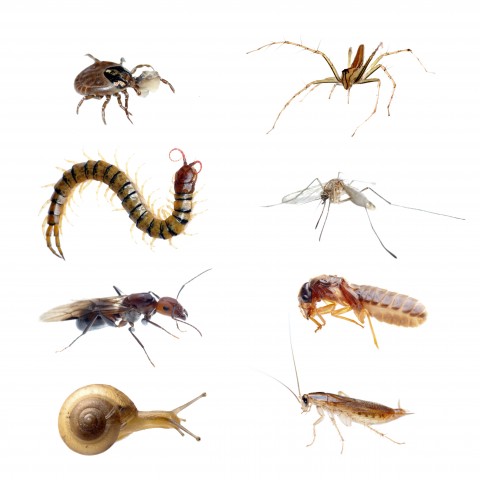
Insekte word bestudeer as ‘n bron van voedsel en medikasie. / “Insects are being researched as a source of food and medicine.”
1.3.b Creepy-Crawlies, Reptiles & Amphibians
Of course, a number of other creatures abound in the wild too. The ones listed below occur abundantly where people live or in urban areas, and many of the insects are farmed as well.
| Afrikaans | English |
| 59. heuningby | honey bee |
| 60. vlieg | fly |
| 61. brommer | bluebottle fly / blow fly / moped |
| 62. mier | ant |
| 63. kewer / besie | beetle |
| 64. kakkerlak | cockroach |
| 65. liewenheersbesie | ladybird / ladybug |
| 66. skoenlapper | butterfly |
| 67. mot | moth |
| 68. uis | louse |
| 69. weeluis | bed bug |
| 70. kopluis | head louse |
| 71. flooi | flea |
| 72. muskiet | mosquito |
| 73. muggie | gnat / midge |
| 74. erdwurm | earthworm |
| 75. mopaniewurm | mopani worm |
| 76. meelwurm | mealworm |
| 77. duisendpoot | millipede |
| 78. honderdpoot | centipede |
| 79. kriek | cricket |
| 80. koringkriek | corn cricket |
| 81. sprinkaan | grasshopper |
| 82. slak | snail |
| 83. padda | frog |
| 84. paddavis | tadpole |
| 85. verkleurmannetjie | chameleon |
| 86. akkedis | lizard |
Example Sentences:
| |
Fun Fact! Did you know that antimicrobial peptides (AMP) found in insects are being studied for their potential to fight infection in humans? The same peptides play a crucial role in the immune system of humans too, making AMPs an important subject of study. Insects are very resilient against infection by most microbials, and AMPs found in the likes of bees, flies, and beetles can even fight multiple types of drug-resistant bacteria. In fact, some scientists believe that AMPs may even replace antibiotics in the future!
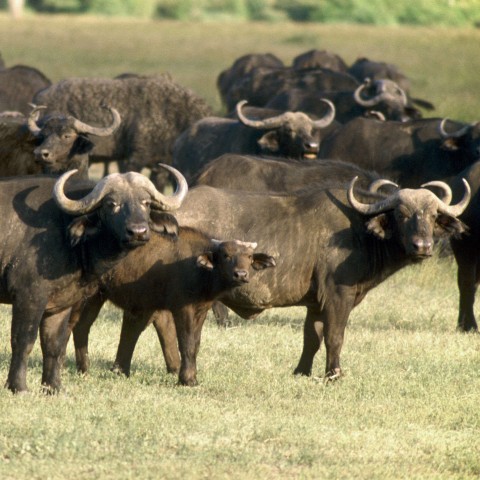
Die Kaapse Buffel is die grootste van die sogenaamde grasland buffels. / “The Cape Buffalo is the largest of the so-called savannah buffalo.”
1.3.c Wildlife Ranching
Wildlife ranching is called “game farming” in South Africa. Animals are kept and taken care of on what is commonly referred to as a “game farm” or wildsplaas. Game farms are kept for conservation, tourism, and breeding purposes. Farmers also (unfortunately) sell these animals as they’re popular for their meat, horns, hides, and canned hunting.
| Afrikaans | English |
| 87. wildsbokke | antelope |
| 88. blouwildebees | blue wildebeest |
| 89. buffel | buffalo |
| 90. waterbuffel | water buffalo |
| 91. rooibok | impala |
| 92. duiker | duiker |
| 93. springbok | springbuck |
| 94. gemsbok | gemsbok / oryx |
| 95. swartwitpensbok | sable antelope |
| 96. kameelperd | giraffe |
| 97. koedoe | kudu |
| 98. zebra | zebra |
| 99. bergzebra | mountain zebra |
| 100. Burchell zebra | Burchell’s zebra |
| 101. waterbok | waterbuck |
| 102. vlakvark | warthog |
| 103. volstruis | ostrich |
| 104. renoster | rhinoceros |
| 105. Afrika renoster | African rhino |
| 106. olifant | elephant |
| 107. Afrika bosolifant | African bush elephant |
| 108. seekoei | hippopotamus |
Example Sentences:
| |
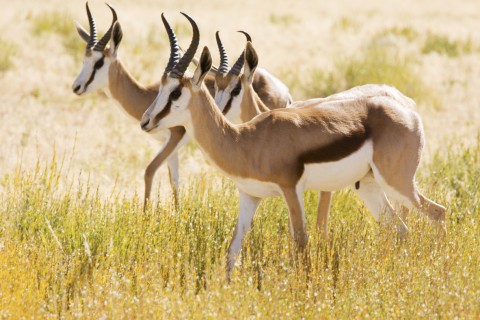
Groot getalle springbokke kom steeds wild voor in Suid Afrika. / “Large numbers of springbuck still occur in the wild in South Africa.”
Not-So-Fun Fact… In May 2019, the South African government surreptitiously passed an amendment to the (surely wrongly-named) Animal Improvement Act, which reclassified 33 wild species as farm animals. The list included endangered species such as black rhinos, cheetahs, water buffalo, and more. This is sad news, seeing that the wildlife ranching-and-breeding industry in South Africa is still underregulated and has experienced some heartbreaking exposés of malpractice in the past.
Without tight regulation, this permissive law may just cause more criminal cockroaches to crawl out of the woodwork.
Fortunately, a proposed amendment of the Meat Safety Act to approve the commercial sale of threatened-and-protected-species (TOPS) and lion meat, was minister-vetoed in late 2020. Captive lion breeding is also in the crosshairs of wildlife conservationists and advocates worldwide, and they are unrelenting in their pressure on the South African government to ban this horrendous practice.
That said—not all game farms are terrible places, and not all game farmers are greedy exploiters of their livestock. In fact, most of them adhere to prescribed regulations and follow good, lawful practices. They assist in protecting endangered wildlife and the environment, and their treatment of the animals is humane.
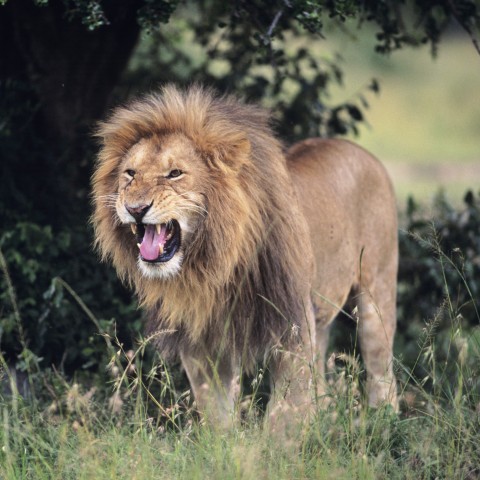
Leeus is steeds die konings van die woud. / “Lions are still the kings of the jungle.”
| 109. leeu | lion |
| 110. wolf | wolf |
| 111. tier | tiger |
| 112. gorilla | gorilla |
| 113. sjimpansee | chimpanzee / chimp |
Example Sentences:
| |
2. Wild Animals
You’ll see that I excluded some wild animals from the following list. Gorillas, chimpanzees, tigers, and wolves are not indigenous to South Africa and live only in captivity on special game resorts or in zoos. Chimps and gorillas can be found elsewhere in Africa, most notably in mid to western African countries like Tanzania, Uganda, Rwanda, and the Democratic Republic of Congo.
The only wolf that we do have roaming our savannas is a tiny fellow called the aardwolf (literally: “earth wolf”). Strictly speaking, it is not a wolf and is closer in resemblance to a hyena. It’s not even predatorial, such as its namesake, but lives on a diet of termites.
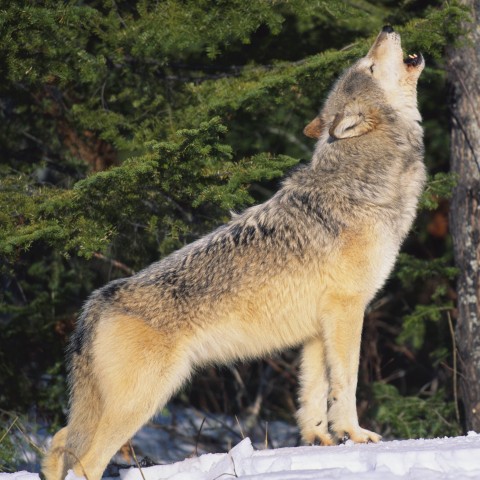
Gryswolwe kom nie natuurlik voor in Suid Afrika nie. / “Gray wolves don’t occur naturally in South Africa.”
Also, the only wild “tiger” occurring in the country is very cute-looking and somewhat resembles a tiny tiger. Called the miershooptier (literally: “anthill tiger”), it often makes its home in abandoned termite nests or anthills. In English, the miershooptier is called a black-footed cat or a small spotted cat. It’s the second-smallest type of cat in the world, weighing only 2.5 kilos (about 5.5 pounds) in adulthood.
Furthermore, of the approximately 12,000 lions left in South Africa, the majority currently live either on breeding farms (in cages or camps) or on wild farms and game reserves. The latter are aimed at their preservation and conservation, as well as the promotion of responsible hunting (though some critics dispute this claim). The former keep these majestic animals solely for breeding and canned hunting purposes.
2.1 On the Land
South Africa is a country with lots of uninhabited space, where plenty of wildlife can still be found—and where the animals prefer to stay. We don’t have any lions roaming the streets of our towns and cities. Below, you’ll find a list of common wild animals in Afrikaans belonging to the mammalian world and otherwise.
2.1.a Mammals
| Afrikaans | English |
| 114. jagluiperd | cheetah |
| 115. hiëna | hyena |
| 116. strandwolf | brown hyena |
| 117. gevlekte hiëna | spotted hyena |
| 118. jakkals | jackal / fox |
| 119. Kaapse jakkals | Cape fox |
| 120. rooijakkals | black-backed jackal |
| 121. bakoorjakkals | bat-eared fox |
| 122. luiperd | leopard |
| 123. wildehond | wild dog |
| 124. wilde kat / vaalboskat | wild cat / desert cat |
| 125. siwetkat | civet |
| 126. tierboskat | African serval cat |
| 127. muskeljaatkat | genet |
| 128. meerkat | suricate / meerkat |
| 129. eekhoring | squirrel |
| 130. waaistert-grondeekhoring | Cape ground squirrel |
| 131. aap | monkey |
| 132. blouaap | vervet monkey |
| 133. nagapie | bushbaby |
| 134. bobbejaan | baboon |
| 135. mol | mole |
| 136. vlermuis | bat |
| 137. dassie | dassie |
| 138. klipdassie | rock dassie |
| 139. wesel | weasel |
| 140. Afrikaanse wesel | African weasel |
| 141. muishond | mongoose |
| 142. stinkmuishond | striped polecat / skunk |
| 143. vlakhaas | Cape hare |
| 144. ystervark | porcupine |
| 145. Kaapse ystervark | Cape porcupine |
| 146. krimpvarkie | hedgehog |
| 147. aardvark | aardvark |
| 148. bosvark | bush pig |
| 149. otter | otter |
| 150. Kaapse otter | Cape otter |
| 151. ratel | honey badger |
| 152. ietermagog | pangolin |
| 153. skeerbekmuis | forest shrew |
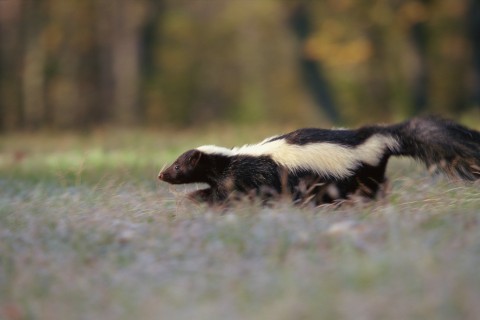
Die muishond kom ook voor in Suid Afrika. / “The skunk can also be found in South Africa.”
2.1.b Creepy-Crawlies & Reptiles
All the creepy-crawlies and reptiles found in domestic areas can also be found in the wild. Here, they’re found in much greater numbers alongside plenty of other species.
| 154. skerpioen | scorpion |
| 155. gloeiwurm | glowworm |
| 156. vuurvlieg | firefly |
| 157. renosterkewer | rhino beetle |
| 158. reuse kewer | giant beetle |
| 159. stinkgogga / stinkbesie | stink bug |
| 160. oorkruiper | earwig |
| 161. luislang | python |
| 162. boa | boa |
| 163. boomslang | tree snake / boomslang |
| 164. adder | adder |
| 165. pofadder | puff adder |
| 166. kobra | cobra |
| 167. Mosambiekse spoegkobra | Mozambican spitting cobra |
| 168. rinkhals | ring-necked spitting cobra |
| 169. molslang | mole snake |
| 170. mamba | mamba |
| 171. groenmamba | green mamba |
Example Sentences:
| |
Fun Fact! Did you know that the Southern African luislang (“python”), also called the rock python, can grow up to five meters (16 feet) long? They’re not fond of being in excessive heat for long periods of time, so during the extremely hot summer months, they like to slip into cool, deep pools and stay there with only their heads above the surface. These pools and ponds are also their preferred hunting areas.
Fortunately for us, this particular species rarely grows big enough to swallow humans. (But I still wouldn’t advise allowing any adult pet python to sleep in the same bed as a child!) The snakes prefer to feed on small antelope, birds, rodents, small pigs, apes, and dassies because eating large prey would mean having to lie still for a very long time so the food could digest. Remaining inert makes the snakes vulnerable to their natural enemies, which include mongooses, hyenas, other snakes, crocodiles, and wild dogs. Southern African pythons are helpful in controlling rodent and ape populations where they live.
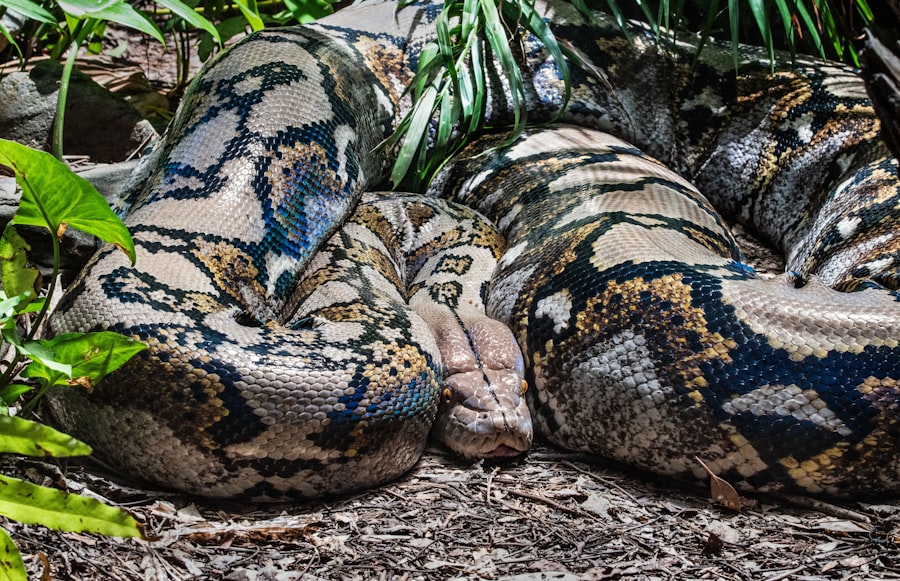
Die Suid-Afrikaanse luislang kan tot vyf meter (16 voet) lank word. / “The South African python can grow up to five meters (16 feet) long.”
2.2. In the Water
Both inland bodies of fresh water and the oceans hugging our coasts teem with their unique selection of wildlife. Keep reading to learn the names of various fish and sea animals in Afrikaans.
2.2.a Ocean Life
South Africa is flanked by two different oceans: the Atlantic Ocean on the western side and the Indian Ocean on the eastern side.
| Afrikaans | English |
| 172. walvis | whale |
| 173. Southern Right walvis | Southern Right whale |
| 174. dolfyn | dolphin |
| 175. stompneus dolfyn | bottlenose dolphin |
| 176. snoek | snoek |
| 177. haai | shark |
| 178. grootwithaai / witdoodshaai | great white shark |
| 179. swaardvis | swordfish |
| 180. tuna | tuna |
| 181. bloumarlyn | blue marlin |
| 182. stokvis | shallow water hake |
| 183. diepwater stokvis | deep water hake |
| 184. skelvis | haddock |
| 185. koningklip | kingklip |
| 186. sardyn | sardine |
| 187. rob | seal |
| 188. Kaapse pelsrob | Cape fur seal |
| 189. seeleeu | sealion |
| 190. seekat | octopus |
| 191. inkvis | squid |
| 192. jellievis | jellyfish |
| 193. bloublasie | bluebottle / Portuguese man o’ war |
| 194. krap | crab |
| 195. kreef | lobster |
| 196. seeslak | sea slug |
| 197. oester | oyster |
| 198. mossel | mussel |
| 199. seeskilpad | turtle |
| 200. seeslang | sea snake |
| 201. seester | starfish |
| 202. see egel | sea urchin |
| 203. seekomkommer | sea cucumber |
| 204. see-anemoon | sea anemone |
Example Sentences:
| |
Fun Fact! Did you know that it’s rather easy to treat a bluebottle sting? These aquatic animals have long tentacles with barbs that inject venom on contact. Their stings look like whiplashes across the skin lined with small red dots, and they’re exceptionally painful. Fortunately, in the vast majority of cases, the stings are harmless and easily treatable.
An online search for the correct treatment of a bluebottle sting proved confusing, as contradictory advice abounds even among official, non-commercial sites. For instance, many sources insist that sting victims are never to pour vinegar on bluebottle wounds, as it will exacerbate the pain. However, some recent, well-designed scientific studies contradict this.

Jy wil nie op ‘n bloublasie trap nie! / “You don’t want to step on a bluebottle!”
First, let’s look at how to avoid getting stung in the first place. Then, we’ll discuss how to decrease pain and suffering in the event of a sting. There are a few things you shouldn’t do:
Don’t…
- …swim in water you know is likely bluebottle-infested.
- …go to the beach unprepared, especially if you know you might encounter bluebottles. Pack clear vinegar, a bottle of fresh water (not for drinking), and a long item with which to remove tentacles (think chopsticks or a grill tong).
- …touch or pop the bladder of a beached bluebottle. (Dead bluebottles can still sting.)
- …rub the sting wound with sand or apply any pressure before taking step 2 under the next heading below. (At this point, even light pressure will instantly increase the venom load, which means more pain.)
- …rinse the wound with alcohol, shaving cream, baking soda, or urine, as these can also increase the venom load in some bluebottle species.
Now let’s look at sting treatments, as advised by the researchers of a recent, excellent study conducted at the School of Medicine, Hawaii University. The researchers studied and tested the efficacy of first-aid measures for bluebottle stings, and their advice was echoed in a South African review article that was recently published in the Current Allergy & Clinical Immunology journal.
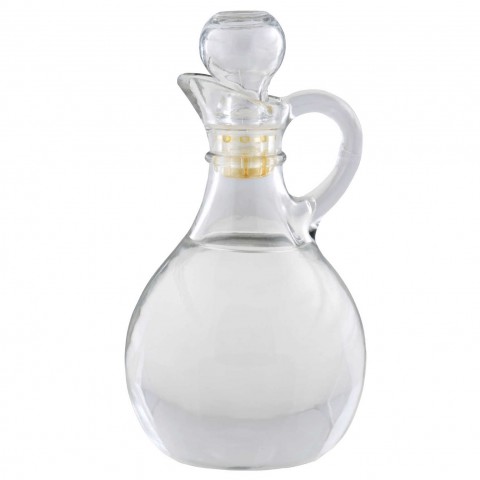
Gebruik onverdunde asyn op ‘n bloublasiesteek. / “Use undiluted vinegar on a bluebottle sting.”
Immediately After a Sting:
- There may not be any, but rinse off adhering bluebottle tentacles with seawater or undiluted vinegar. Ideally, avoid using freshwater for this step, as it could result in more venom cells releasing their toxins into the skin.
- If some tentacles don’t rinse off, they’ll need to be removed manually. If you’ve used vinegar to douse the tentacles, it will inhibit their ability to continue stinging and protect the helper too, but this has not been proven in vivo, it seems. Some sources claim that it’s safe for adults to remove tentacles with their bare fingers, while other sources caution against this, as one could get stung oneself. To be safe, consider using an item like chopsticks, a dry stick, or even grilling tongs for this step.
- With the tentacles gone, it’s time to remove the tiny barbs. First, douse the wound again with undiluted vinegar. The Hawaiian study has found that vinegar completely inhibits the embedded cells from discharging their venom, even when pressure is applied. Common, shop-bought vinegar is fine for this purpose.
- Now, scrape off any tiny barbs still adhering to the skin with the edge of something like a knife, a razor blade, or even a credit card. You could use tweezers for this, as well. Removing the barbs will help the victim avoid secondary stinging and further injury.
As Soon as Possible After a Sting:
Submerge or douse the wound with hot water (as hot as can be tolerated), for as long as possible. This will reduce pain, as heat breaks down the pain-causing venom in the body. In fact, this step is helpful in virtually all aquatic sting wounds. Take a large bottle of water to the beach and let it sit in the sun to heat, so you can have hot water ready in the event of a sting.
Seek Medical Help If:
- → the sting is severe and covers a large area of the person’s body (especially in children);
→ the pain persists; or
→ other symptoms develop after taking the aforementioned first-aid measures.
Side-effects and allergic reactions are extremely rare, but individual physiology differs, and a large venom load could cause problems in some cases.
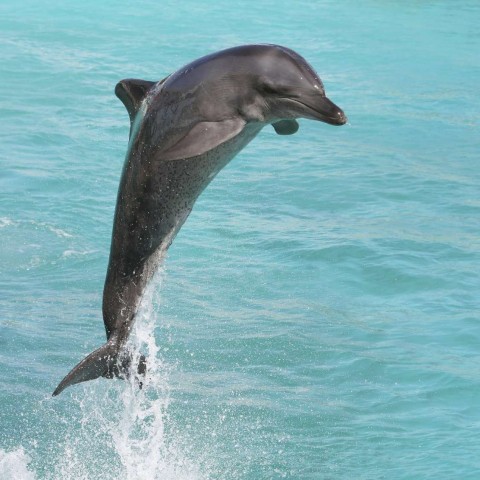
Bottelneus dolfyne is sierlike diere. / “Bottlenose dolphins are graceful animals.”
2.2.b Freshwater
The inland bodies of water have an equally impressive list of inhabitants.
| Afrikaans | English |
| 205. waterskilpad | turtle |
| 206. seekoei | hippopotamus |
| 207. krokodil | crocodile |
| 208. Nylkrokodil | Nile crocodile |
| 209. rivierpaling | river eel |
| 210. waterslang | water snake |
| 211. salm | salmon |
| 212. katvis | catfish |
| 213. forel | trout |
| 214. reënboog forel | rainbow trout |
| 215. karp | carp |
| 216. bas | bass |
| 217. geelvis | yellowfish |
| 218. rooiborskurper | tilapia |
| 219. kabeljou | cod |
| 220. moddervis | labeo |
| 221. Oranjerivier moddervis | Orange River mudfish |
| 222. makriel | mackerel |
| 223. naaldekoker | dragonfly |
| 224. waterhondjie | water walker |
| 225. waterjuffer | damselfly |
| 226. hottentotsgot | praying mantis |
Example Sentences:
| |
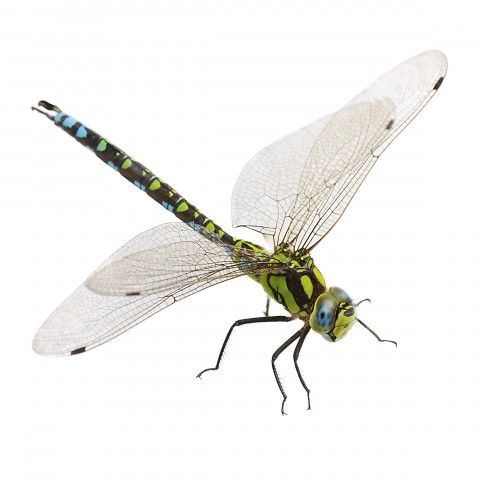
Al het hulle ses lang bene, kan naaldekokers nie goed loop nie. / “Even though they have six long legs, dragonflies can’t walk well.”
2.3 In the Sky
South African birds are a paradise for ornithologists. Especially for a walk in the veld or the mountains, remember to bring good binoculars or a camera, a bird guide, and a notebook.
| Afrikaans | English |
| 227. houtkapper | woodpecker |
| 228. arend | eagle |
| 229. visarend | fish eagle |
| 230. visvanger | black cormorant |
| 231. valk | falcon / hawk |
| 232. uil | owl |
| 233. aasvoël | vulture |
| 234. kraanvoël | crane |
| 235. bloukraanvoël | blue crane |
| 236. ooievaar | stork |
| 237. pelikaan | pelican |
| 238. kiewiet | plover / lark |
| 239. tarentaal | guineafowl |
| 240. mossie | Cape sparrow |
| 241. spreeu | sparrow |
| 242. fisant | pheasant |
| 243. flamink | flamingo |
| 244. reier | heron / egret |
| 245. hadeda | hadeda ibis |
| 246. gompou | kori bustard |
| 247. gonsvoël | buzzard |
| 248. horingbekvoël | hornbill |
| 249. suikerbekkie | sunbird / sugarbird |
| 250. bontvisvangers | kingfishers |
| 251. sekretarisvoël | secretary bird |
| 252. seemeeu | seagull |
| 253. albatros | albatross |
| 254. pikkewyn | penguin |
| 255. Afrika pikkewyn | African penguin |
| 256. vink | finch |
| 257. kraai | crow |
| 258. koekoek | cuckoo |
| 259. lyster | thrush |
| 260. swaan | swan |
| 261. kwartel | quail |
Example Sentences:
| |
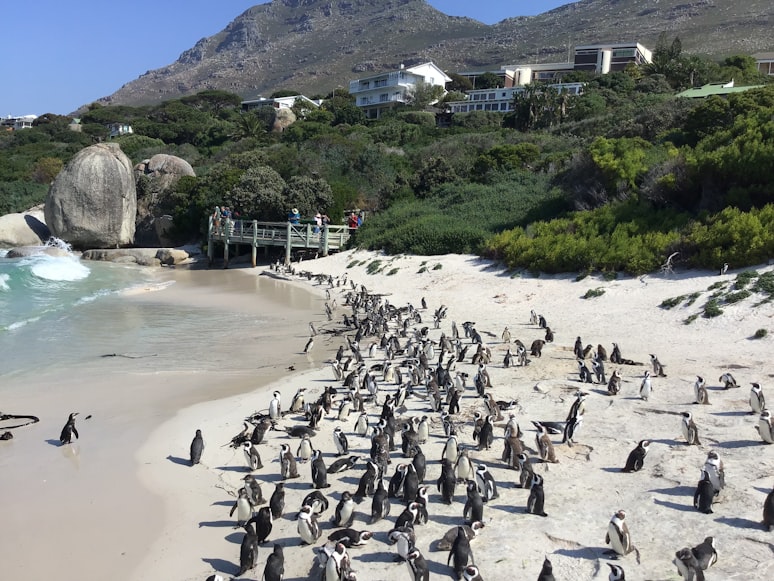
Boulders Beach in Simonstad, Kaapstad, huisves groot kolonies Afrika pikkwyne. / “Boulders Beach in Simon’s Town, Cape Town, is home to large colonies of African penguins.”
3. Animal Body Parts
Just like the human body, the bodies of animals, insects, and reptiles have different parts.
| Afrikaans | English |
| kop | head |
| horing/s | horn(s) |
| oog | eye |
| oë | eyes |
| ore | ears |
| snoet | snout |
| snorbaard/e | whisker(s) |
| voeler/s | feeler(s) |
| bek | the mouth of any animal, except a bird’s |
| snawel | bill / beak |
| tande | teeth |
| slagtand/e | incisor(s) OR fang(s) |
| tentakel/s | tentacle(s) |
| nek | neck |
| lyf / liggaam | body |
| bors | chest |
| voorlyf | upper body / torso |
| tiet/e | teat(s) / breast(s) |
| tepel/s | nipple(s) |
| agterlyf | rump |
| stert | tail |
| been / bene | leg(s) |
| voorbeen / voorbene | front leg(s) |
| agterbeen / agterbene | hind leg(s) |
| poot / pote | paw(s) |
| voorpoot / voorpote | front paw(s) |
| agterpoot / agterpote | hind paw(s) |
| klou/e | claw(s) |
| nael/s | nail(s) |
| flipper / vin | flipper / fin |
| kieu | gill |
| kiewe | gills |
| veer / vere | feather(s) |
| stertveer / stertvere | tail feather(s) |
| dons / donsvere | down (feathers) |
| pels | coat |
| haar / hare | hair |
| skub / skubbe | scale(s) |
Example Sentences:
| |
4. Common Afrikaans Animal Expressions, Idioms, and Sayings
- Hy lyk of die kat sy kos gesteel het.
“He looks like the cat stole his food.”
This describes someone who looks disappointed, discouraged, or dejected.
- Jy kerm soos ‘n kat oor ‘n derm!
“You complain like a cat over a piece of intestine!”
Use this comment when someone complains and moans about trivialities and nonsense, or when they don’t want to stop complaining. The rhyme in Afrikaans gives it a humorous effect.
- Al dra ‘n aap ‘n goue ring bly dit maar ‘n lelike ding.
“Even when a monkey wears a golden ring, it remains an ugly thing.”
This saying means that no matter how much an unattractive, uncouth person or object is spruced up or presented, they remain ugly.
Note: Be cautious how you use this idiom, though. Some might find it offensive.
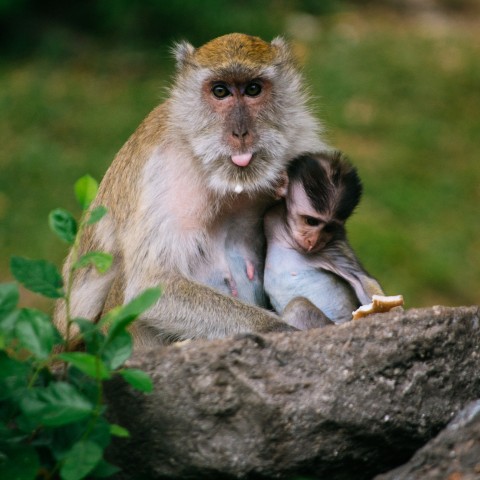
Al dra ‘n aap ‘n goue ring bly dit maar ‘n lelike ding. /
“Even when a monkey wears a golden ring, it remains an ugly thing.”
- Addergebroedsel
“Offspring of adders”
This strong, colorful term that sounds like it belongs in a Greek drama is used to describe sly, unreliable, or even dangerous people. In a sentence, you would say:
Moet nie daardie politikusse glo nie; hulle is addergebroedsel.
“Don’t believe those politicians; they’re the offspring of adders.”
- Dis ‘n bees van ‘n pampoen!
“That is a bull of a pumpkin!”
This expression is used to describe anything exceptionally large or impressive. One can replace pampoen with many other nouns to indicate its extraordinary size or extent.
- Selfs bobbejane het daar ‘n kierie nodig.
“(To walk) there, even baboons need a walking stick.”
This saying is used to describe a road or place that is practically impassable.
- Susan en Pieter gaan bokke bymekaar jaag.
“Susan and Peter are going to herd their goats.”
This is an old way of saying that a couple is getting married.
- Donkie skel vir Langoor uit.
“Donkey scolds Langoor.”
This idiom is similar to the English, “The pot is calling the kettle black.” Langoor (literally: “long ears”) is a popular name for a donkey, especially in Afrikaans children’s fiction. So, the idiom is used to describe someone who criticizes another for something they’re guilty of themselves.
- ‘n Gebraaide duif / eend / gans vlieg niemand in die mond nie.
“A fried pigeon / duck / goose won’t fly into anyone’s mouth.”
With this idiom, we say that nothing is accomplished without effort. Interestingly, a similar-sounding saying is used in reference to someone who’s effortlessly lucky:
Gebraaide ganse vlieg sommer in haar mond.
“Fried geese simply fly into her mouth.”
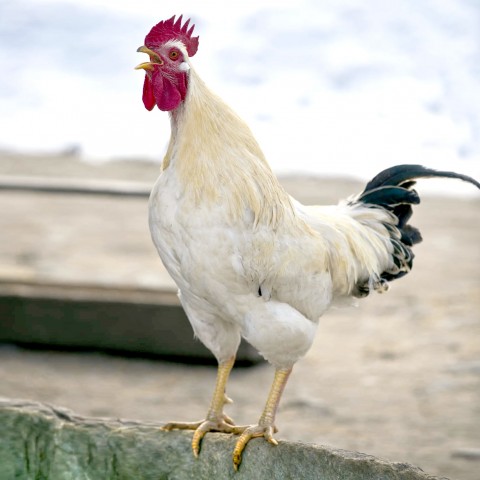
Die winkel is net ‘n hanetree van ons huis af. / “The shop is only a rooster’s step from our house.”
- ‘n Hanetree
“A rooster’s step”
This expression is used when we want to say that one thing is a very short distance from another. It sounds like this in a sentence:
Die winkel is ‘n hanetree van ons huis af.
“The shop is a rooster’s step away from our home.”
- Wanneer die hoenders tande kry
“When chickens grow teeth”
When someone uses this ironic idiom, it means that something is very unlikely to happen. It can be used as-is in a comment, or in a sentence like this:
Hy sal eers verander wanneer die hoenders tande kry.
“He will change only when chickens grow teeth.”
Another saying with the same meaning is:
Wanneer die perde horings kry.
“When horses grow horns.”
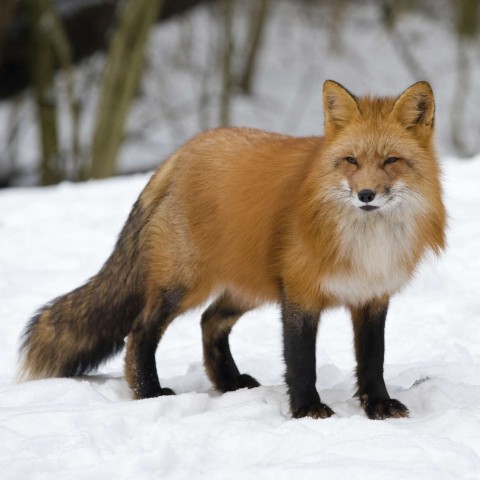
Jakkals prys sy eie stert! / “Fox praises his own tail!”
- Die hond se gedagtes kry
“To get the dog’s thoughts”
This odd expression is used in reference to one’s thoughts of suspicion. Like this:
Hy was aanvanklik optimisties oor die projek, maar die kontrak het hom die hond se gedagtes gegee.
“He was optimistic about the project at first, but the contract made him suspicious.”
- As ‘n mens ‘n hond wil slaan kry jy maklik ‘n stok.
“If you want to beat a dog, you’ll easily find a cane.”
This means that if you really feel like harming or hurting someone, you’ll easily find a way to do so.
- Jakkals prys sy eie stert.
“Fox praises his own tail.”
This vivid saying is used to comment when someone boasts excessively about their own accomplishments or attributes.
- Die kalf is in die put.
“The calf is in the well.”
In the olden days, when Afrikaans Christian folks were forced to work on a Sunday (such as when there was an emergency on the farm), they would use this saying. These days, we use it to indicate that doing something that’s (strictly speaking) disallowed or unplanned is inevitable due to an emergency. You could use it in the following context, for instance:
Ons word nie eintlik in die kantoorgebou toegelaat oor naweke nie, maar die kalf is in die put. Die versoek vir hierdie uiters dringende verslag het onverwags vroeg gekom.
“We are not really allowed to enter the office building over weekends, but it is inevitable. The request for this very urgent report came unexpectedly early.”
- Nie ‘n kat se kans nie
“Not a cat’s chance”
This saying is used to convey that the chances of something happening are very limited or non-existent.
Hy het nie ‘n kat se kans met daardie meisie nie.
“He doesn’t have any chance with that girl.”
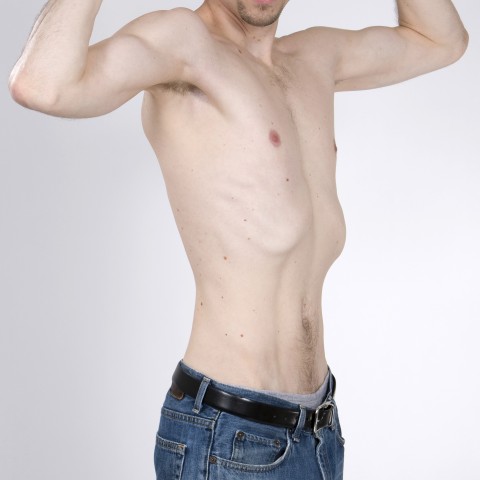
Hy is so maer soos ‘n kraai. / “He is as thin as a crow.”
- So maer soos ‘n kraai
“As thin as a crow”
If you want to say that someone is physically very thin, this is the idiom you’d use.
- Mossie, maar man
“(Only a) sparrow, but (a real) man”
When a boy or a man of small stature distinguishes himself as courageous, intelligent, and persistent in the face of a challenge, this saying would describe them well. Also, think of a cheeky chihuahua furiously barking at (and often scaring off) a much larger dog—tiny but impressively courageous! Mossie (“sparrow”) is used interchangeably with muggie (“gnat”).
- Dis net die oortjies van die seekoei.
“Those are only the ears of the hippo.”
The hippopotamus’ natural habitat is close to water, in which it often swims to keep cool and feeds on vegetation. When the animal rests, it lies just under the surface with only a small part of its head visible above water. We use this metaphor when only a small part of something is known or observable, meaning that the largest part is unknown or hidden—just like the large hippo’s body under the water.
- Slaan twee vlieë met een klap
“Hits two flies with one smack”
If you’re in town to have coffee with a friend, but you also make use of the opportunity to run an errand, then you’ve “hit two flies with one smack,” so to speak. This is a comment on using time and opportunity economically. Consider this sentence:
Slaan sommer twee vlieë met een klap; kom kuier wanneer jy weer in hierdie omgewing is vir werk.
“Why not be economical with time; pay me a visit when you come this way again for work.”
5. Why not learn about animals in Afrikaans with AfrikaansPod101?!
I hope you learned something interesting from this article. What’s your favorite animal? Name it in Afrikaans in the comments!
With AfrikaansPod101, you’ll not only learn the names of animals in Afrikaans—we have so much more to offer. Get to know the language and Afrikaans culture by starting with these blog posts:
- How Hard is it to Learn Afrikaans?
- The Best Afrikaans Verbs List at Your Fingertips!
- Best List of Must-Know Afrikaans Pronouns
- Top Compliments in Afrikaans for All Occasions!
- Names and Terms for Families in Afrikaans
- The South African Weather Experience — What You Need to Know
Let us make it easier for you with our innovative approach to language learning. You can expect the following:
- Plenty of recorded words, phrases, and conversations in Afrikaans to train your ear and help you with pronunciation
- Situational and culturally appropriate phrases to prepare you for any situation
- Plenty of free online tools upon subscription to ease the learning process, such as this free Afrikaans dictionary
- Thousands of lessons tailored to meet you at your level of language proficiency, while giving you enough content to help yourself with straightaway (such as this free list of Afrikaans Key Phrases)
- Several learning options that suit your pocket and your language learning needs, including our MyTeacher service which allows you to fast-track your fluency
Enroll with us at AfrikaansPod101.com now for a lifetime membership. It’s worth it!
About the Author: Christa Davel is an experienced, bilingual (Afrikaans and English) freelance writer and copy editor, who’s currently based in Cape Town, South Africa. She’s been writing for InnovativeLanguage.com since 2017.










